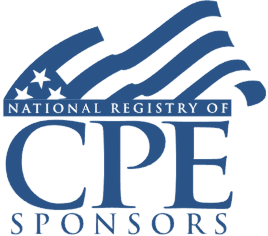Welcome! Save 30% on all CLE, CPE, and Professional Skills webinars, plus 15% off any annual pass with code HOLIDAY25
About the Course
Introduction
This webinar will point out key decisions and tax opportunities that new companies and their advisers should consider. Our panel of tax and transaction experts will guide you through selecting the most suitable structure, handling startup costs, and recognizing federal and jurisdictional tax incentives, as well as other key tax considerations that new businesses should not overlook.
Description
Before starting a business and while in the early planning stage, key decisions must be made; some early considerations can result in significant tax savings for new companies. First and foremost, there is the choice of entity. There are benefits and drawbacks for each entity type. This choice determines whether the owner draws a salary, the business or individual reports the business income, and the overall tax remitted by the company and its owners.
Tax credits and incentives are offered for research and development costs. The R&D credit can significantly offset product development costs. Structured properly, capital gains from the eventual sale of qualified small business stock (QSBS) could be eliminated.
Equity compensation can be a powerful tool for attracting and retaining key employees. Early consideration of methods of compensation, including options (incentive vs. non-qualified), a profits interest, or carried interest, for example, can ensure business goals are met and tax consequences are minimized. Business entrepreneurs and their advisers need to be aware of the importance of initial decisions to facilitate future business operations.
Listen as our panel of federal tax advisers points out considerations that are essential for business startups.
Presented By

Mr. Guay oversees Kaufman Rossin’s research and development tax and cost segregation service lines. Leveraging his industrial engineering experience, he helps clients qualify for and capture R&D and other specialized tax credits. With the R&D tax credit’s recent permanency and application to startups, Mr. Guay provides R&D tax services to both established businesses and early-stage companies in South Florida’s growing startup scene. He assists clients across many industries, including aerospace, banking, biotechnology, construction, food and beverage, healthcare, manufacturing and technology. Mr. Guay's expertise includes the federal Credit for Increasing Research Activities (R&D tax credit) in the U.S. and the Scientific Research & Experimental Development (SR&ED) program in Canada. As a leader of the firm’s cost segregation practice, he manages a specialized team focused on assisting clients in accelerating the depreciation of portions of their real estate investments. Mr. Guay and his team conduct engineering-based cost segregation studies to help provide significant tax savings for real estate developers and investors constructing, renovating or buying commercial real estate.

Ms. Laver is a Director in Kaufman Rossin’s Tax Advisory Services practice, where she helps lead the Firm’s Tax Transaction Services group. She has extensive experience advising corporate and private equity clients on buy- and sell-side transactions, including tax due diligence, structuring, and deal consulting. Ms. Laver also supports clients with federal and state tax compliance and ASC 740 accounting for income taxes, with experience across the retail, manufacturing, real estate, technology, and professional services industries.

Mr. Stratos is a Principal in Kaufman Rossin's international tax and transactions department where he provides extensive knowledge to his clients on international tax planning for both individual and corporate taxes as well as structuring and due diligence on the buy and sell side. His expertise in international tax includes the areas of foreign tax credit planning, residency issues, state and local issues for international and multinational businesses, expats and inpats, pre-immigration planning, transfer pricing, compensation planning, treaty positions, entity selection, organizational structuring and withholding issues.
-
BARBRI is a NASBA CPE sponsor and this 110-minute webinar is accredited for 2.0 CPE credits.
-
BARBRI is an IRS-approved continuing education provider offering certified courses for Enrolled Agents (EA) and Tax Return Preparers (RTRP).
Date + Time
- event
Monday, December 8, 2025
- schedule
1:00 p.m. ET./10:00 a.m. PT
I. Tax considerations for startups: introduction
II. Choosing the entity type
III. Qualified small business stock (QSBS)
IV. Startup costs
V. Equity compensation
VI. Federal & State R&D Tax Credit
VII. Treatment of R&D Expenditures
VIII. State and local taxes
IX. Recordkeeping and compliance
X. Other considerations
The panel will cover these and other critical issues:
- How the R&D credit can offset product development costs
- Structuring equity compensation agreements to minimize tax and meet business goals
- Recordkeeping and compliance obligations of new businesses
- Utilizing QSBS provisions to mitigate or eliminate capital gains tax
Learning Objectives
After completing this course, you will be able to:
- Identify key tax incentives offered by federal and jurisdictional tax authorities
- Determine the tax implications of various entity structures
- Decide when and how to amortize or deduct startup costs
- Ascertain how equity compensation arrangements can be used to attract and retain key employees
- Field of Study: Taxes
- Level of Knowledge: Intermediate
- Advance Preparation: None
- Teaching Method: Seminar/Lecture
- Delivery Method: Group-Internet (via computer)
- Attendance Monitoring Method: Attendance is monitored electronically via a participant's PIN and through a series of attendance verification prompts displayed throughout the program
- Prerequisite:
Three years+ business or public firm experience preparing complex tax forms and schedules, supervising other preparers or accountants. Specific knowledge and understanding of pass-through taxation, including taxation of partnerships, S corporations and their respective partners and shareholders.

BARBRI, Inc. is registered with the National Association of State Boards of Accountancy (NASBA) as a sponsor of continuing professional education on the National Registry of CPE Sponsors. State boards of Accountancy have final authority on the acceptance of individual courses for CPE Credits. Complaints regarding registered sponsons may be submitted to NASBA through its website: www.nasbaregistry.org.

BARBRI is an IRS-approved continuing education provider offering certified courses for Enrolled Agents (EA) and Tax Return Preparers (RTRP).

BARBRI CE webinars-powered by Barbri-are backed by our 100% unconditional money-back guarantee: If you are not satisfied with any of our products, simply let us know and get a full refund. Contact us at 1-800-926-7926 .
Unlimited access to premium CLE courses:
- Annual access
- Available live and on-demand
- Best for attorneys and legal professionals
Unlimited access to premium CPE courses.:
- Annual access
- Available live and on-demand
- Best for CPAs and tax professionals
Unlimited access to premium CLE, CPE, Professional Skills and Practice-Ready courses.:
- Annual access
- Available live and on-demand
- Best for legal, accounting, and tax professionals
Unlimited access to Professional Skills and Practice-Ready courses:
- Annual access
- Available on-demand
- Best for new attorneys
Related Courses

Reconstructing Returns for Non-Filers
Wednesday, January 28, 2026
1:00 p.m. ET./10:00 a.m. PT

Inadvertent S Corporation Status Terminations: Revocations, Remedies, and Recent Cases
Tuesday, January 20, 2026
1:00 p.m. ET./10:00 a.m. PT

Transfer Pricing: Practical Strategies and Cash-Saving Insights, Managing Tariffs
Tuesday, February 3, 2026
1:00 p.m. ET./10:00 a.m. PT

Preparing New Schedule 1-A: New Tips, Overtime, Car Interest, and Senior Deductions
Wednesday, January 14, 2026
1:00 p.m. ET./10:00 a.m. PT
Recommended Resources

How CPE Can Bridge the Gap Between What You Know and What You Need to Know
- Career Advancement


